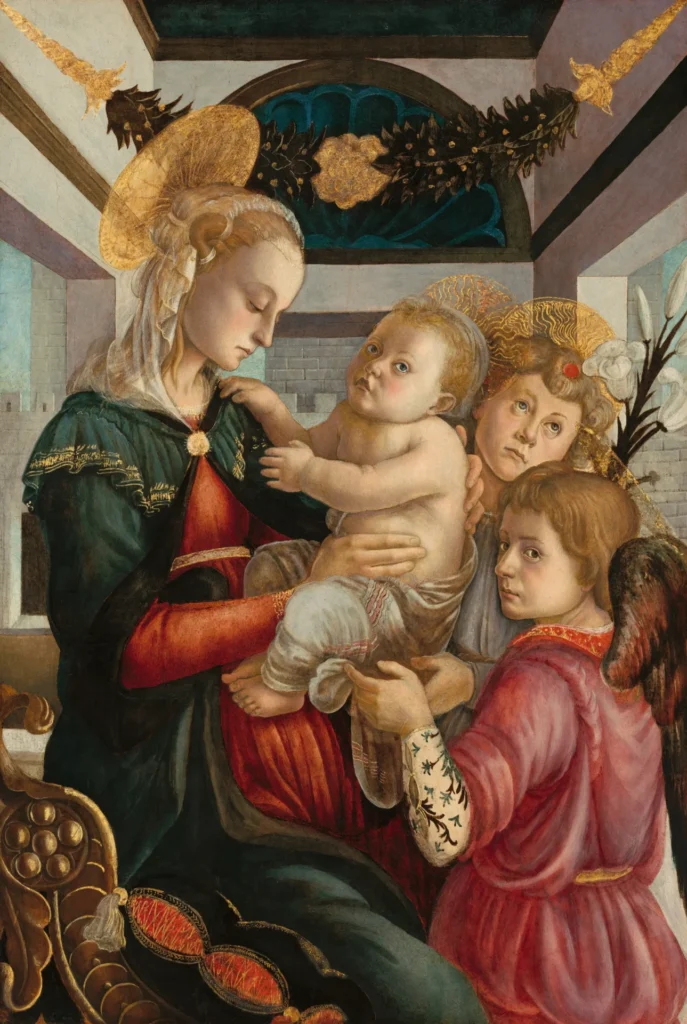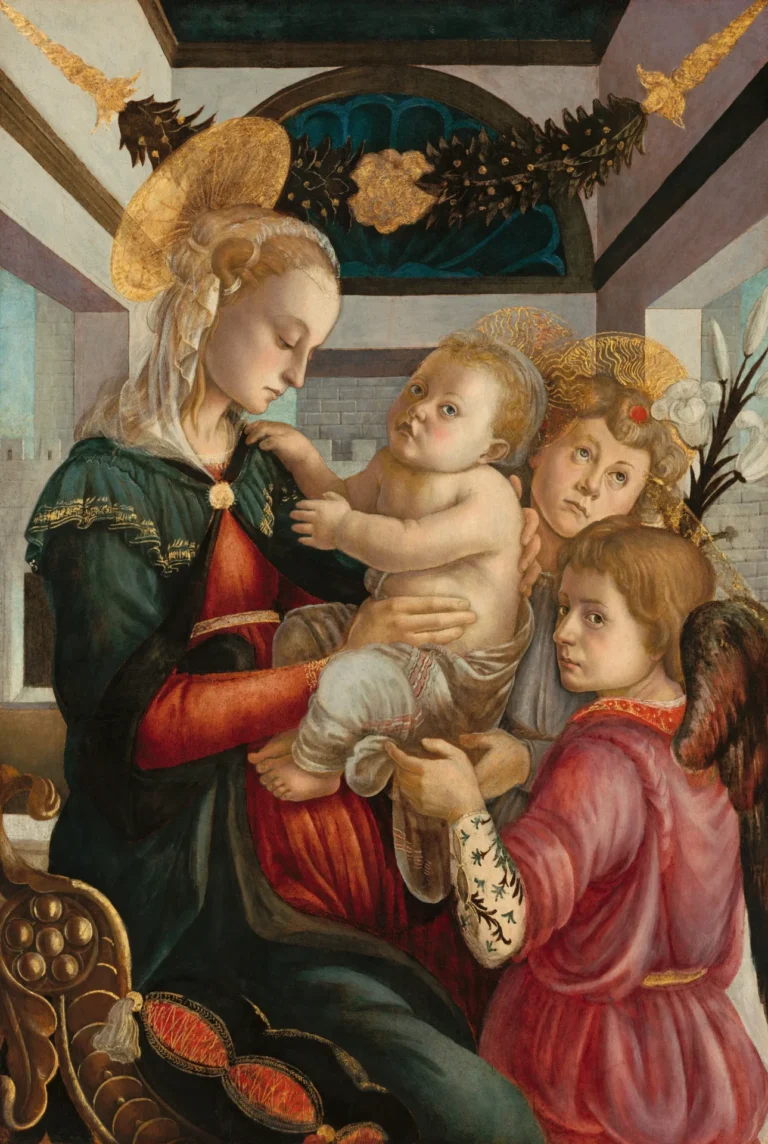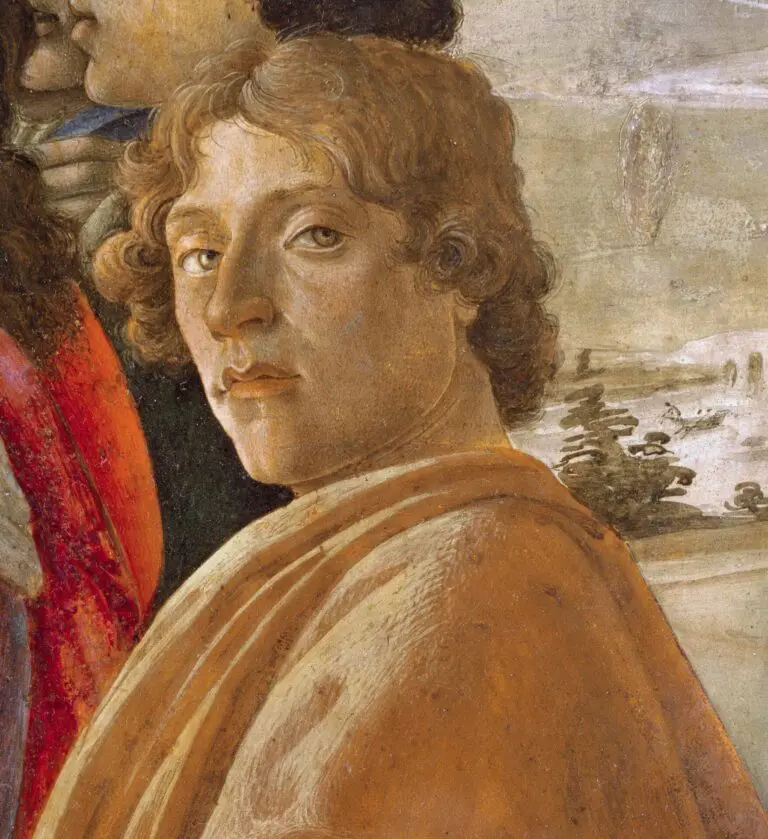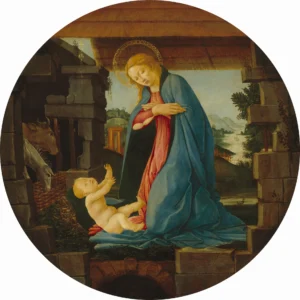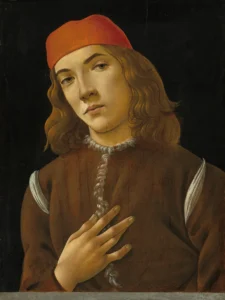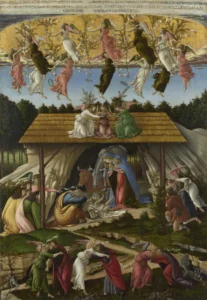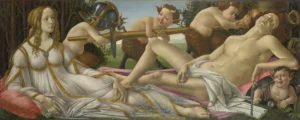Madonna and Child with Angels (1465–1470)
Sandro Botticelli's Madonna and Child with Angels. created circa 1465-1470, exemplifies the delicate and spiritual beauty characteristic of early Renaissance art. Set within a narrow interior space, the composition features the Madonna and her Child surrounded by two angels. The artwork demonstrates Botticelli's artistry influenced by fellow painter Filippo Lippi, capturing a serene connection between the divine figures that resonates with viewers. This early work foreshadows Botticelli's notable stylizations and techniques that would become hallmarks of his later masterpieces.
Circa 1465 - 1470
About the Artwork
This artwork emerged during a pivotal time in Botticelli's artistic journey, likely during or just post his apprenticeship under Filippo Lippi, a renowned master of the early Renaissance. The piece reflects the Medici family’s influence, as it was probably commissioned by them, showcasing both the patronage of art prevalent during this era and the deep spiritual connections sought in religious art. Botticelli skillfully blends Lippi's graceful style with his interpretation of beauty, emphasizing the tenderness of the relationship between Mary and Jesus. Despite minor imperfections, the painting marks the beginning of Botticelli's exploration of idealized figures and intimate settings that would come to define his future works.
Did You Know
Botticelli’s Madonna and Child with Angels draws strong influence from his teacher, Filippo Lippi, particularly in the graceful compositions and emotional expression evident in the depiction of the Madonna and the Child.
The painting is believed to have been commissioned for a member of the Medici family, highlighting the significant role of these patrons in the flourishing of Renaissance art in Florence.
This artwork is an early example of Botticelli’s ability to convey spiritual intimacy, contributing to the 15th-century Florentine devotional narrative style and setting the stage for his later, more celebrated works such as ‘The Birth of Venus’ and ‘Primavera.’




